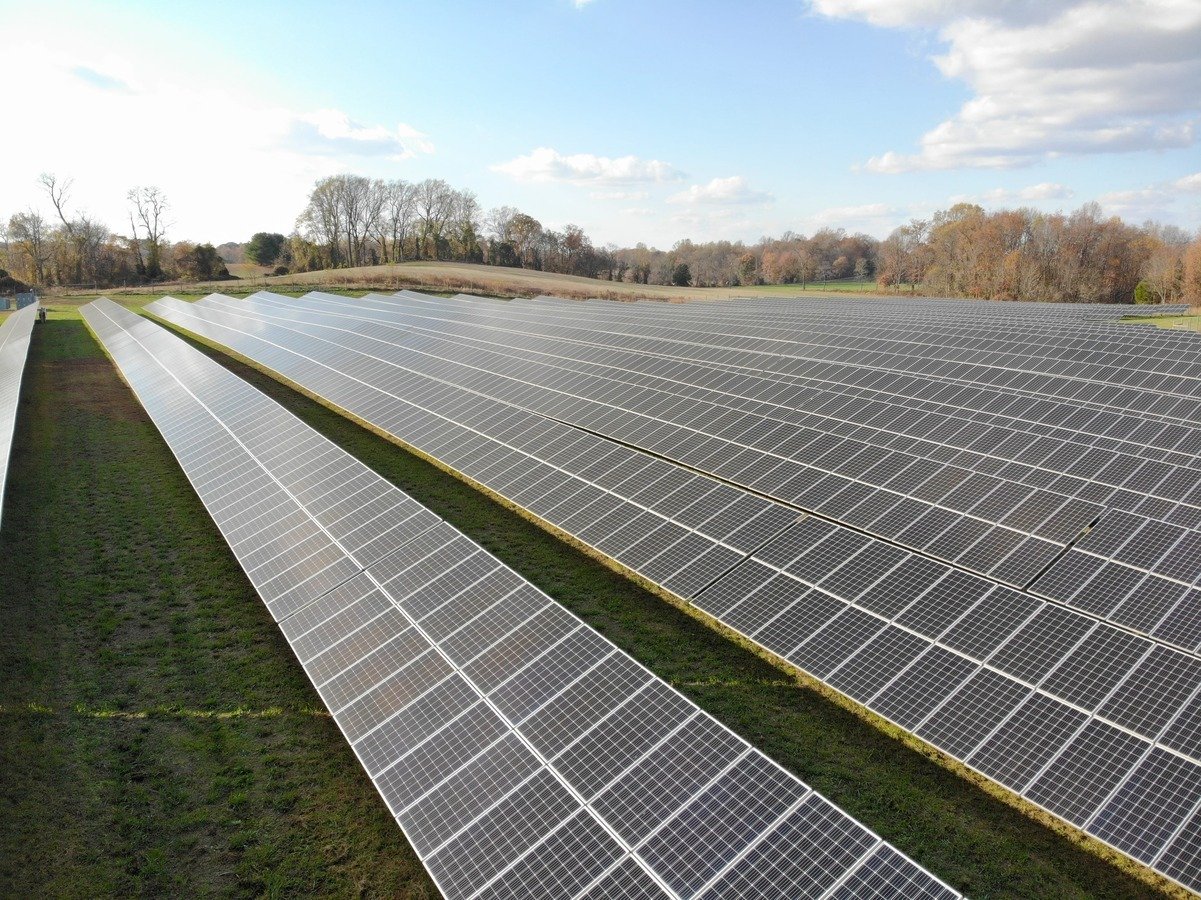
May 8, 2025
Do Maryland Community Solar Programs Work?
Community solar programs have gained significant traction across the United States, and Maryland is no exception. With the state's commitment to renewable energy and uncertainty around community solar, many residents are either curious or skeptical about the effectiveness of these programs.
This article explores community solar in Maryland, debunks common solar myths, and looks at how a solar subscription can affect monthly bills.
Debunking Myths Around Maryland Community Solar
One of the most widespread myths about Maryland community solar programs is that they are a scam. This misconception often arises from a lack of clear information or miscommunications about how these programs work.
Community solar allows multiple households and businesses to share the financial benefits of a local solar farm, typically one to five megawatts (MW) in size.
P art icipants subscribe to a farm and receive ‘solar credits’ (measured in kilowatt-hours, just like on a utility bill) for a percentage of the solar energy produced each month. This means subscribers receive credits based on the solar farm’s generation (dependent on seasonality, weather, and sunlight), not their individual monthly ene rgy usage. Participants receive a discount of 10% (or more) on solar electricity generated.
Myth 1: Community Solar is a Scam
Community solar programs are legitimate, state-incentivized, and are regulated by state authorities. In Maryland, the Public Service Commission oversees these programs to ensure they meet regulatory standards and provide genuine benefits to subscribers.
This program was designed to make solar energy accessible and affordable to residents who may not have the ability to install solar panels on their property, such as renters or homeowners with unsuitable roofs.
Myth 2: Community Solar is Expensive
Another myth is that community solar costs more than with the utility company alone. In reality, community solar can offer cost savings on electricity bills. Because solar energy is more cost-effective to generate, Nautilus Solar can provide a discount on energy generated.
Additionally, Maryland community solar programs offer special discounts for low-and-moderate income households, an opportunity for higher discounts on electricity.
Why Do Subscribers Receive Two Bills?
Subscribers often get confused when they receive a bill from Nautilus Solar and their utility company for electricity but were told they would be saving money. It is easy to think: more bills, more money. Let’s debunk this!
Dual billing is a common practice in community solar programs, where subscribers receive two separate bills each month: one from the utility company and one from the community solar provider.
The Utility Bill
The utility bill includes supply and delivery charges for the electricity consumed from the grid, minus the solar credits (solar electricity in kWhs) received for the portion of solar energy produced that month. These credits reduce the overall amount owed to the utility company.
The Community Solar Bill
The community solar bill covers the cost of the solar credits deducted from the utility bill. This bill includes the solar energy charged at the utility’s rates minus a 10% (or more) discount for being a subscriber to a Maryland community solar program.

A key concept about dual billing: It’s important to match the billing periods of your utility bill and your Nautilus bill, rather than focusing on the invoice dates. Due to the time it takes for us to receive billing information from the utility company, there is a delay in receiving your Nautilus bill.
While dual billing has room to improve, it ultimately provides transparency and ensures that subscribers see the direct impact of their solar energy usage on their overall electricity costs. Some states are moving towards consolidated billing, where both charges are combined into a single bill, simplifying the process further.
Nautilus Solar’s Impact in Maryland
Nautilus Solar Energy® is a key player in the Maryland community solar landscape. With 21 operational solar farms and over 5,300 Maryland customers, Nautilus Solar has made significant contributions to the growth of solar.
In 2024 alone, Nautilus Solar saved customers over $3.80 million dollars on electricity bills!

Community Solar: A Solar Solution Made Simple
In summary, community solar in Maryland allows homes and businesses to contribute to the state’s renewable energy development while also benefitting from real savings on monthly electricity bills!
Learn more about how a Nautilus Solar subscription could and would benefit you.

.png)
.png)
.png)